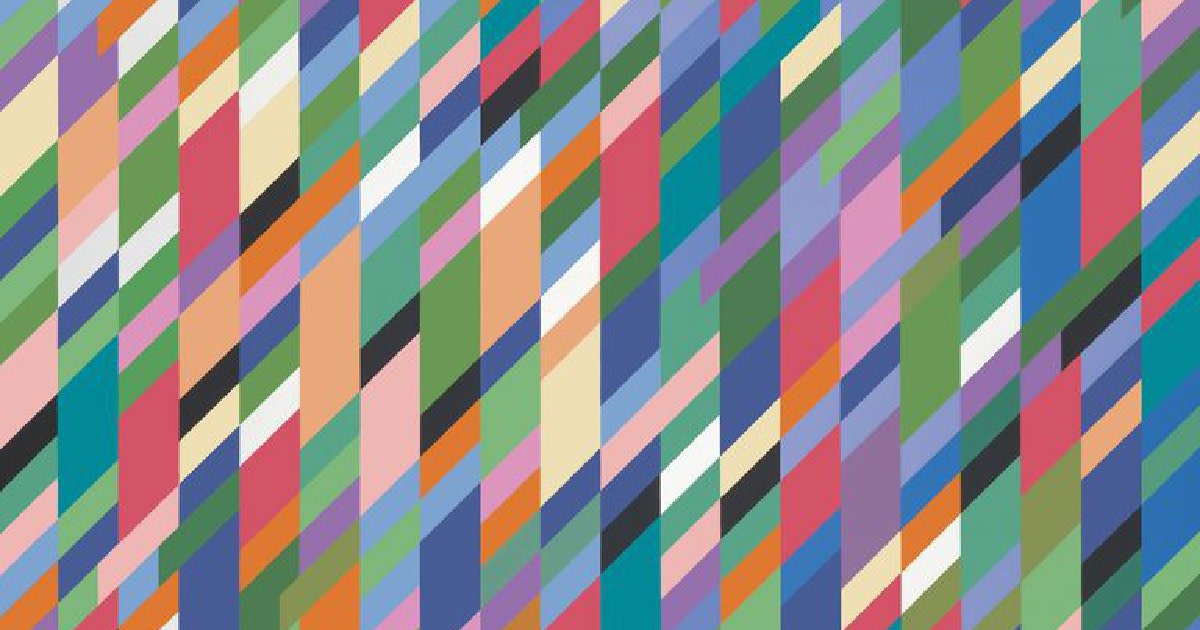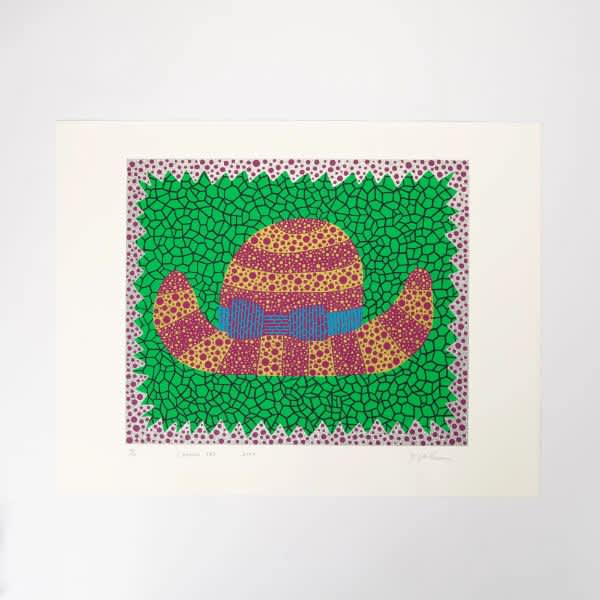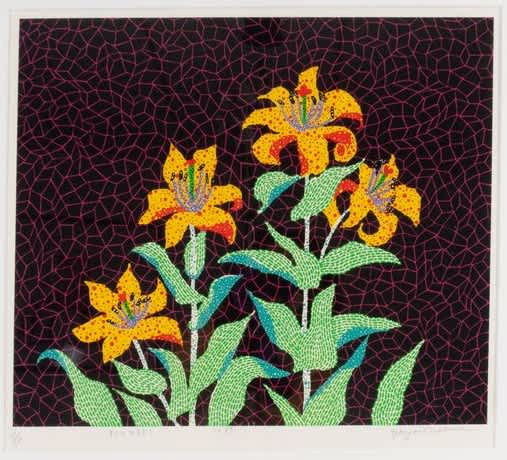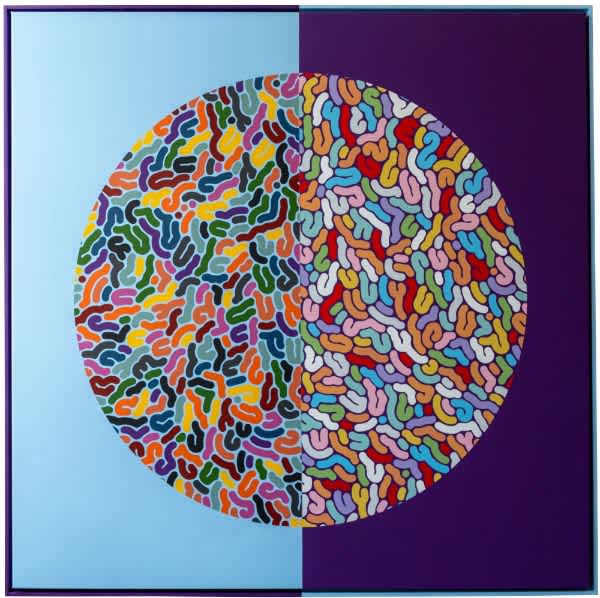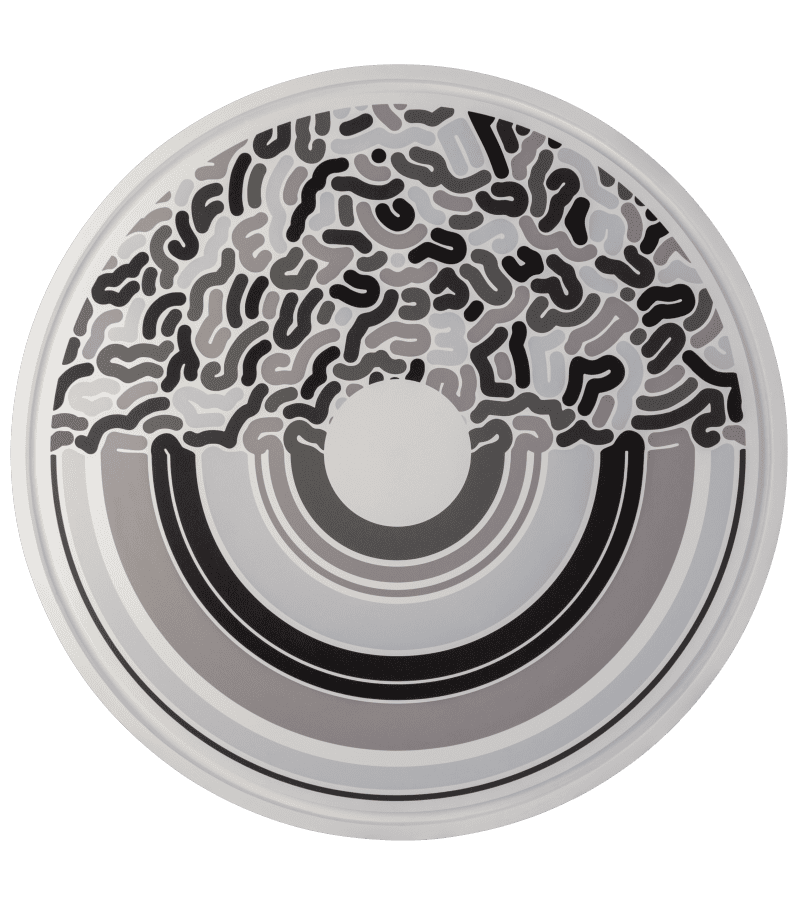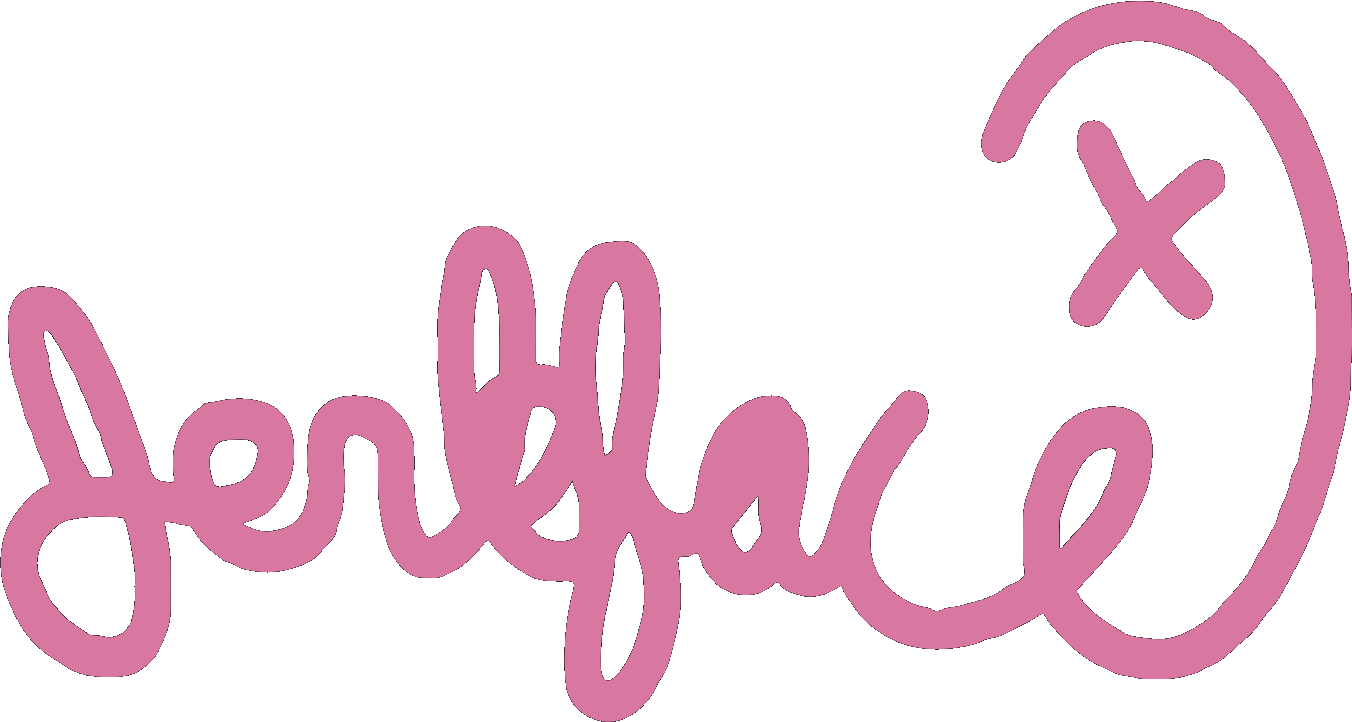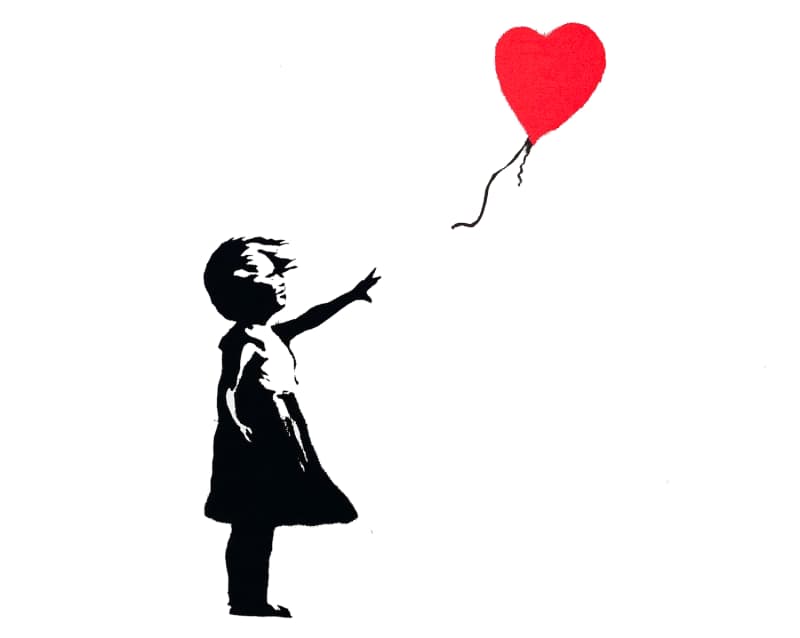In celebration of Lefty’s highly anticipated Op Art inspired exhibition opening next week, we delve into the 1960s genre and discuss its lasting effects on contemporary art and culture.
Even if you have never heard of the term Op Art, you have undoubtedly experienced it, whether that be through fashion, furniture or art. Emerging in the 1960s, Optical Art, otherwise known as Op Art, derives from the Kinetic art movement and employs abstract geometric patterns to create illusionary effects. Executed in a range of colours, the works are as dizzying as they are exciting, and the effects of the genre can still be felt in the art world today. In anticipation of Lefty Out There’s latest Op Art inspired exhibition, Vivus II, we look into the history of the genre and consider its effects on contemporary art and culture.
LEFTY OUT THERE, IRIS (COLOUR), 2022
History of Optical Illusions In Art
The illusionary capabilities of painting have been utilised for thousands of years, stretching back to the beginning of the Early Modern period. The Renaissance saw artists like Mantegna perfect foreshortening and perspective which laid the foundations for trompe l’oeil. Meaning ‘to deceive the eye’ in French, trompe l’oeil is an artistic technique that uses realistic imagery to create an optical illusion. One of the most famous examples of this technique is the decoration of the Camera degli Sposi in Mantua which Mantegna executed between 1465 and 1474. Most notable in this room is the false opening in the ceiling which has been hailed as a prototype of trompe l’oeil, as the painted sky appears to be so real. Trompe l’oeil continues to be a key part of painting today and the spatial elements of proportion that were refined to perfect this technique are the very rules that are broken and bent in Op Art to confuse and stun the viewer.
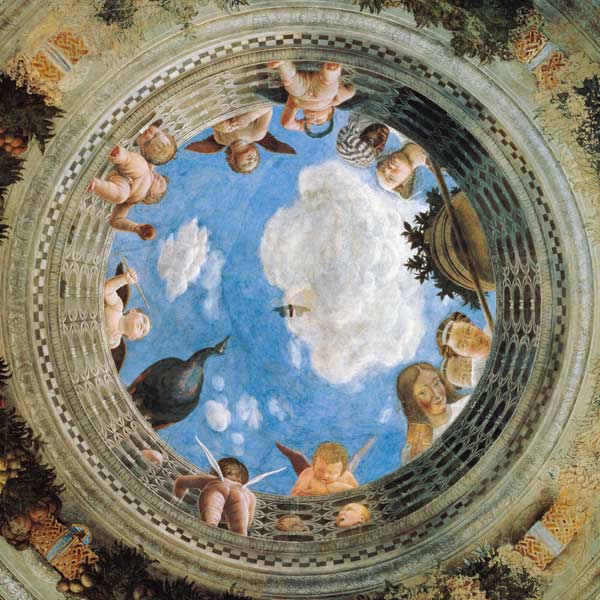
ANDREA MANTEGNA, CAMERA DEGLI SPOSI, 1465 - 1474
The Origin Of Op Art
Op Art was a major development in the Kinetic art movement in the 1960s. Whereas the Kinetic art movement championed sculpture that was mobile, Op Art paintings sought to create the illusion of movement through the formal arrangement of shapes and colour. The flat canvases of Victor Vasarely and Bridget Riley pulsate and spin, tricking the viewer and challenging traditional notions of perception.
JUSTIN BOWER, MESMERIZED II, 2020
In 1965, the importance of the Op Art movement was solidified when MoMA held an exhibition of more than 125 abstract paintings by over 75 artists, entitled The Responsive Eye. Bringing together a range of creatives who were at the forefront of Op Art including Riley, Vasarely and Josef Albers, the exhibition had mixed reviews. ‘Hypnotic’; ‘bewildering and upsetting’; ‘[the] kind of thing a madman might put on a cell wall in order to drive someone crazy’ - are just a few of the mixed reactions recorded by documentary maker Brian De Palma on the opening night of the exhibition. The show was incredibly visually intense with dizzying geometric shapes and complex patterns featured on every wall. The collection was assembled by William Seitz, a MoMA curator who is indebted with coining the term ‘optical art’ or ‘retinal art.’ Seitz notes that "Unlike … previous abstract painting, [the featured] works exist less as objects to be examined than as generators of perceptual responses, of colors and relationships existing solely in vision; of forms, presences and variations often entirely different from the static stimuli by the artist”. In this way, the 1965 exhibition and Op Art itself, was revolutionary in its approach to perception and this continues to affect art today.
YAYOI KUSAMA, CHAPEAU (II), 2000
The Legacy of Op Art
Contemporary artists continue to take inspiration from the Op Art movement with a range of creatives drawing on earlier investigations of perception and vision throughout their work.
From the multiplying dots of Yayoi Kusama and the dizzying portraits of Justin Bower to the vibrating polymorphs of Lefty Out There, the effects of Op Art can be found in all corners of the globe.
Multidisciplinary artist Lefty Out There has taken direct inspiration from Op Art for his latest exhibition, Vivus II, opening 31st March. Known for creating his polymorph designs, his latest body of work sees the artist use Op Art to visualise and escape from the intensity of everyday life, post-pandemic. Combining geometric shapes with his iconic clusters, Lefty quotes Carlos Cruz-Diez as an influence for this exhibition and the parallels are evident in Lefty’s vivid treatment of colour and space. With the artist transforming our flagship gallery from ceiling to floor, Vivus II will create an immersive optical experience like no other.
LEFTY OUT THERE, DUALITAS, 2022
